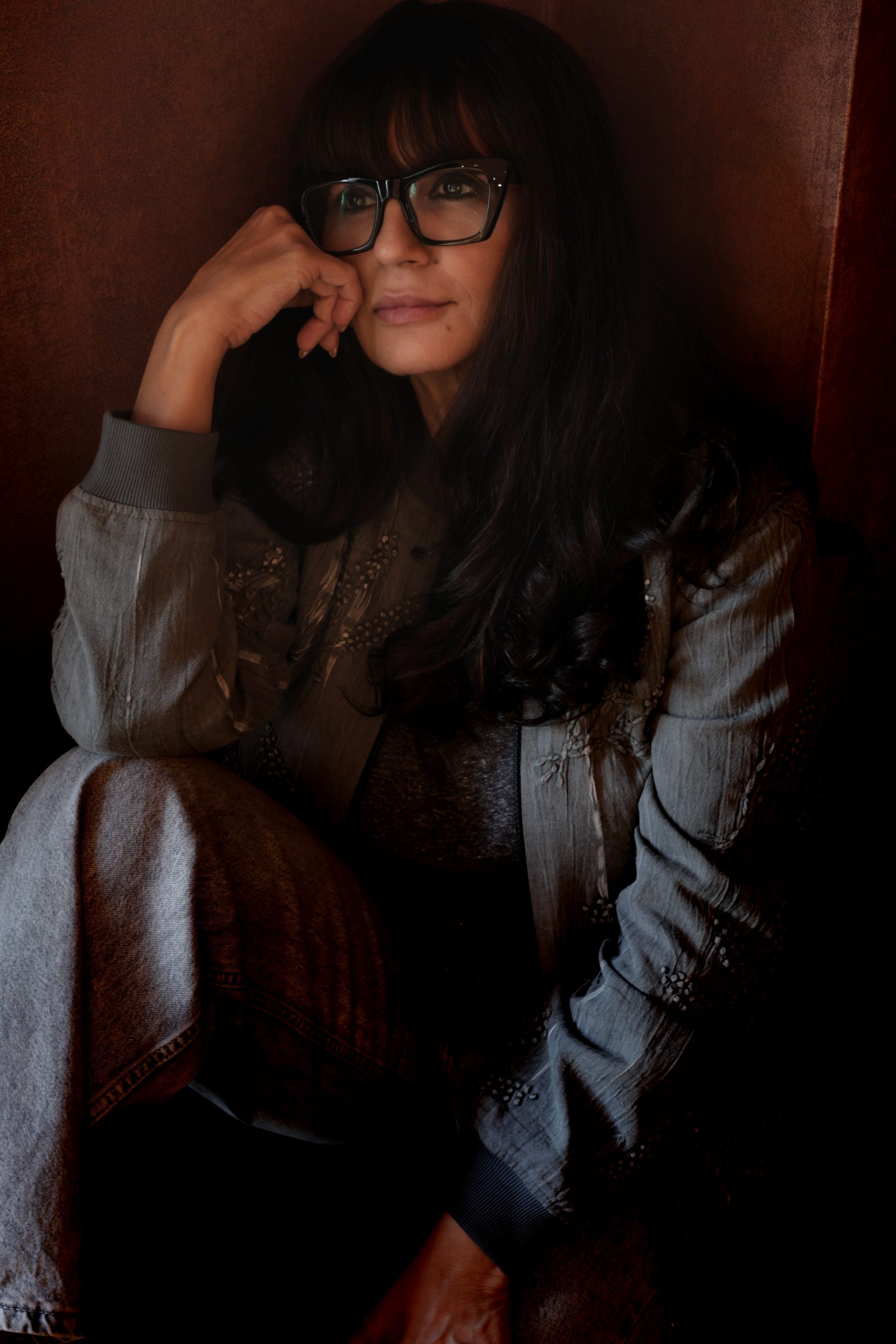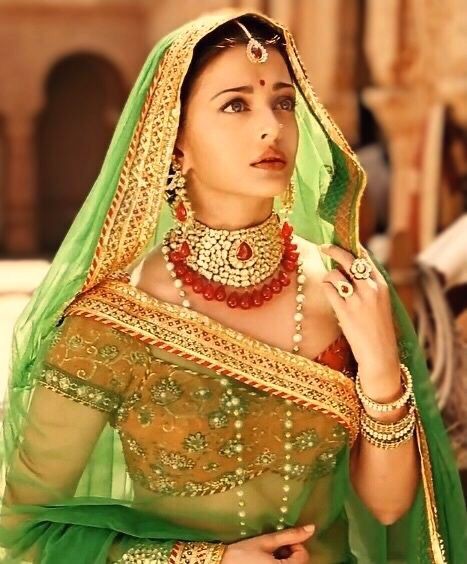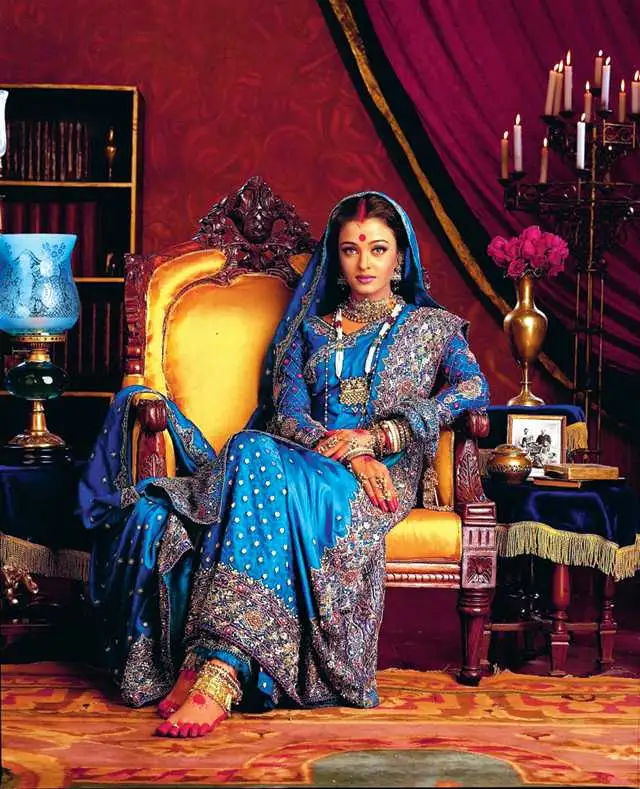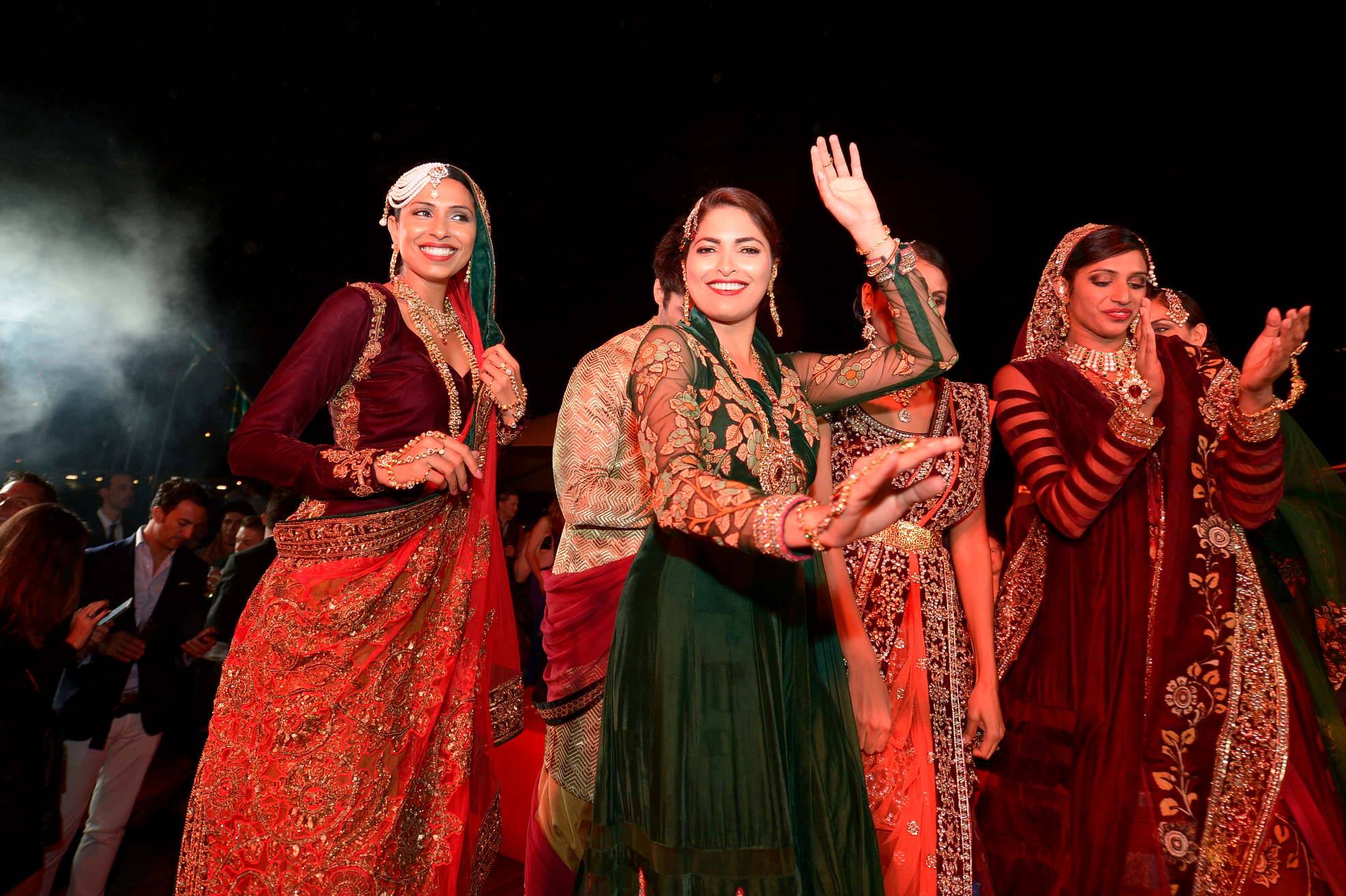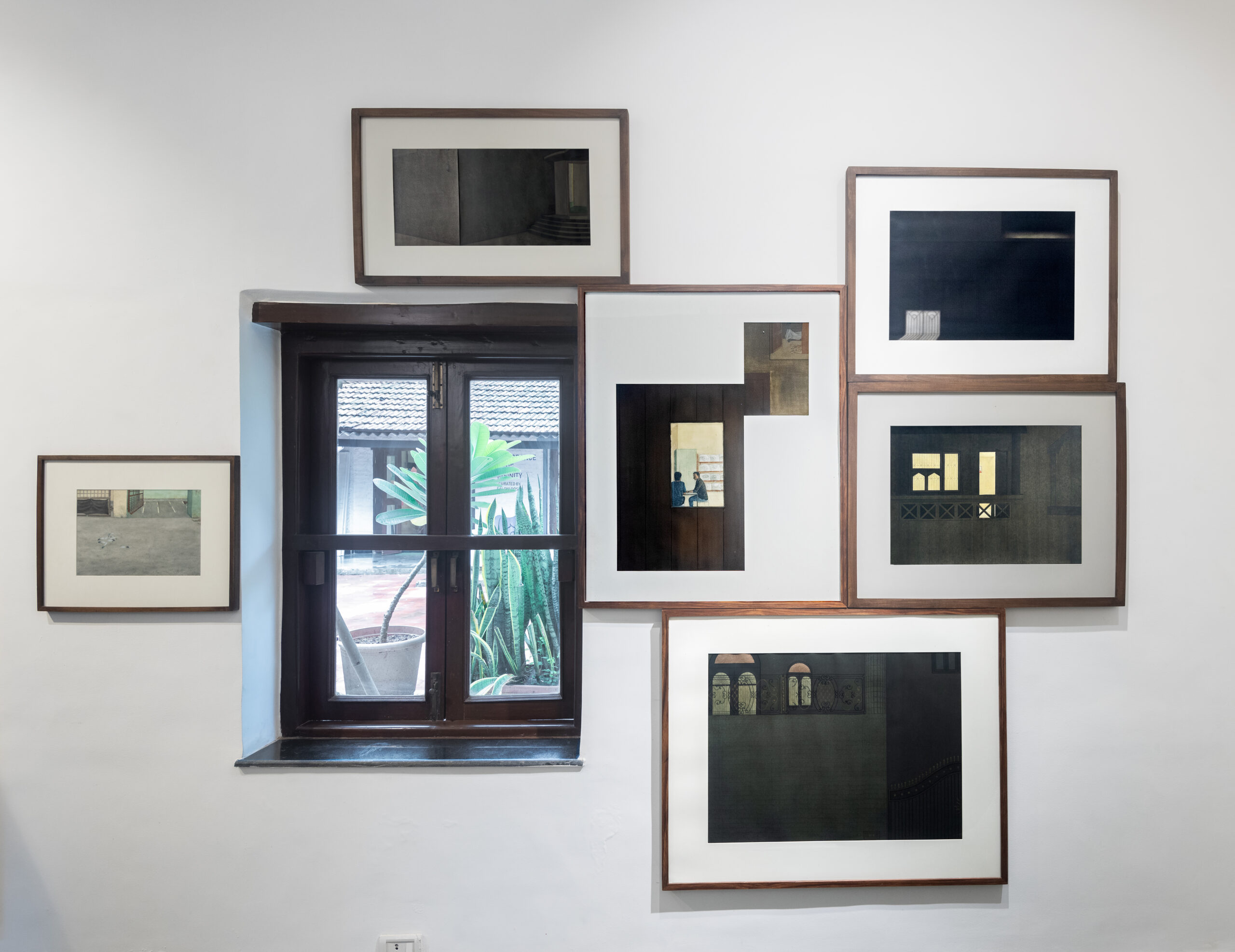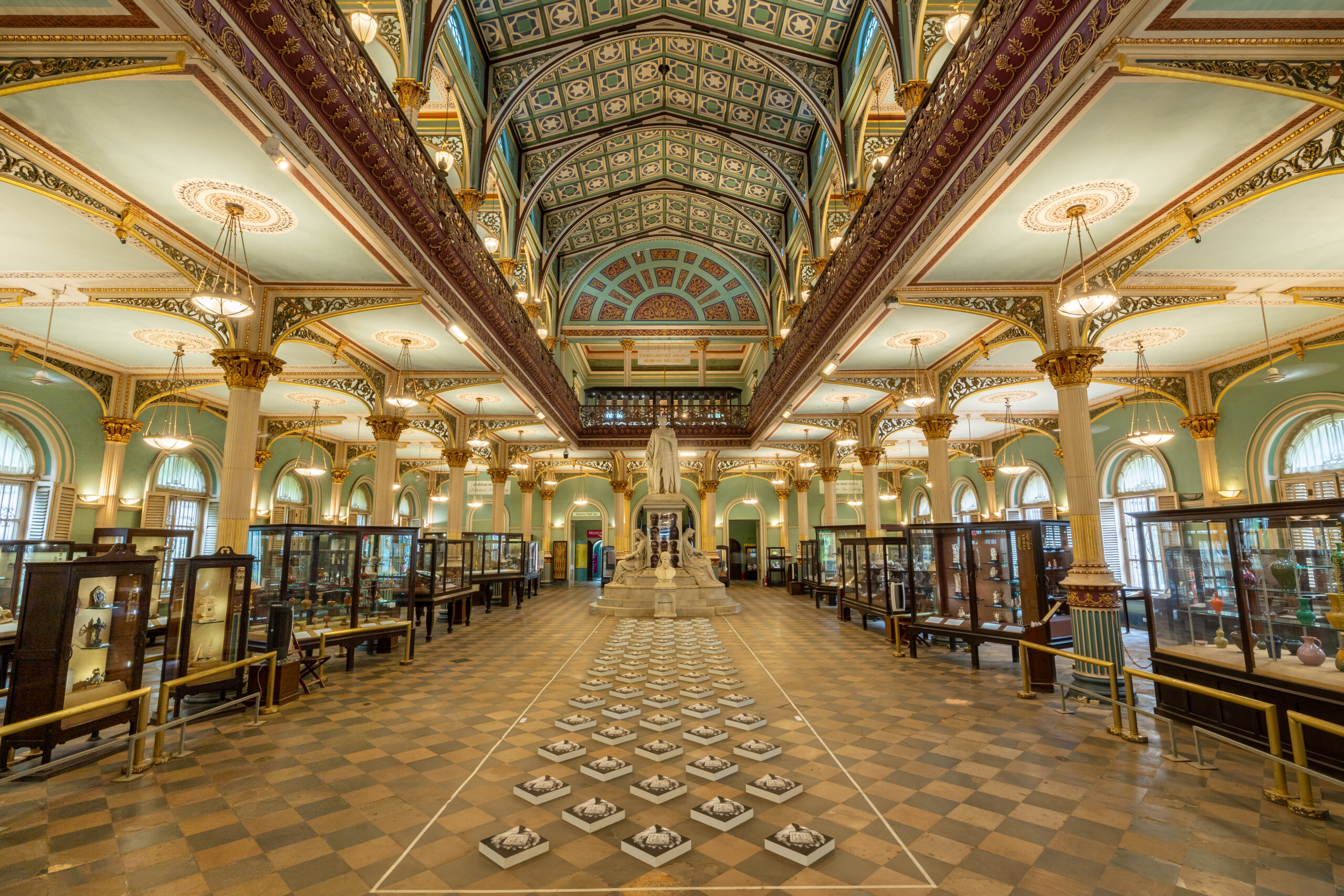Is it surprising that for the past 40 years, the average Indian’s aspiration when it comes to their weddings, has been quietly shaped by Neeta Lulla? It is not just the thousands of students she has mentored during her 36 years of teaching at SNDT Women’s University or Hamstech College of Creative Education or via HUNAR — who have absorbed from her the desire to master fabric, its feel and its fall — but also millions sitting in cinemas, awestruck as Jodha and Akbar parry with swords in swirling white chooridaar-kurtas and a distraught thakuraain runs, her saree’s pallu on fire, towards huge iron wrought gates clanging shut on a drunk and dying Deva. These are exciting moments in India’s cultural memory; but if you ask Neeta whether she felt their weight at the time, she will simply say, “…All my days are equally exciting.”
Some of Neeta Lulla’s famed work in Bollywood – each as mesmerising as the next
It was Sridevi who called her, insisting that she accept her National Award for Best Costume Design in 1992, an event Neeta was planning to give a miss. On that stage, with President Venkataraman, it hit her that ‘Neeta Lulla’, the name she doodled on her notebooks, had become huge. A complicated view of success was triggered, “How could I ever better this? It is done, I have peaked. Yet year after year, every project I have got is one better than the other. I started my career with both bridal couture and films. It was difficult, the lines between the two have blurred only recently, back then there was a divide.” Her work in Hum Dil De Chuke Sanam (1999) intersected with the moment when media was talking about Bollywood’s impact on fashion, especially on the common viewer. She was being written about profusely. But for her, fame ultimately rested on research, diligence and pedagogy. While it is euphoric to win awards, what is truly priceless for her is a client she serviced 10 years ago, on running into her, lovingly gushing about their perfect wedding outfit; which after all these years has not a stitch, not a rhinestone, out of place. It must take a rigorous work ethic to sustain this quality. “If you put up a façade, you cannot bring out the element of Saraswati. You have to be true to yourself, your job, the people around you and to your customer. I don’t hesitate from telling a customer that they are picking a wrong outfit. I cannot afford someone in a wrong outfit saying they are wearing Neeta Lulla,” she says. But there is a very human element in her practice. Especially with bridal couture, she walks the line between what the bride wants and the “chatter around her of friends and family”. She invests at an emotional level, guiding the holistic look. Her colleagues call her “Devil Wears Prada’s Meryl Streep” albeit a gentle one. “I am okay with that. We are in a constantly evolving business; one has to use their common sense. Ask me a question two hundred times, but then do it right,” she says.
Does she see fashion in our country existing in spaces beyond weddings and cinema? She tells me, “Absolutely. Look at our sculptures from the past, the miniature paintings. Look at how gorgeously the women are dressed. Look at how our parents dressed, look at Indian housewives — they know what looks ‘pretty’, the old black and white photographs. There is a lot of mix of cultures in our people’s style.” Her work in the film industry stands out for its vast array of period dramas. It takes her back to the young girl she was, “My Principal called me to her office one day, saying that you are very good at costumes so you should pursue a PhD in costume history. I refused. I had gotten quite far by simply observing my teachers and following my instinct. My grades were excellent. But you know the karmic cycle,” she says, referring to life’s surprising circular patterns. She recalls the amount of research and leg work she put in for Devdas (2002), Khuda Gawah (1992), Hum Dil De Chuke Sanam (1999) or Jodha Akbar (2008). They were equivalent to the PhD she had once turned down. “Today, by God’s grace, whenever someone wants to make a period drama they come to me. I am considered an expert,” she says And that’s true even beyond India. She worked on a Hollywood project One Night with the King (2006).
Aishwarya Rai Bachchan in Jodha Akbar in the designer’s masterpiece
Neeta understands the power of cinema. Jodha Akbar did not remain an impeccably styled historical drama alone but transformed how wedding jewellery is done in India till date. She says, “When you go watch a film, in that dark room, the characters become you and you become them. I grew up to my mom taking clippings of Rekhaji and Shabanaji and making those clothes for me. For parties we went like lookalikes of Rekhaji in Khubsoorat. People have asked me to give them the exact same outfit from Jodha Akbar for their weddings. They would even go to the Tanishq store to get the sword!”
On the lifecycles of fashion trends she says, “In ’90s we’d notice that fashion would trickle in, peak in five years, and a slow descent would start after a year. That’s when another trend would come up. But in 2000s fashion was much easier to access and the life of fashion trends contracted to a period of a year or even six months. Every trend that comes in is embedded somewhere in the history of the back trend.”
You do not need to be a fashion student to be mesmerised by the flow of narrative Neeta builds around her industry. “I have a whole archival collection which I often go back to and be inspired or restructure a piece. In India we don’t just want to follow trends but cater to the sensibility which values tradition,” she says. What about the international fashion space, as an Indian designer does she feel among peers? “Early 2000, I did a show in Monte Carlo. A lot of famed European designers were there, I was given the finale. Backstage they were completely in awe of Indian craftsmanship and I was amazed at their techniques. My philosophy is western cuts and Indian fabrics, for instance Edwardian corseting in lehenga-cholis. So there was a mutual admiration and genuine respect.”
An alluring fashion show by Neeta Lulla at the opening night of the Monaco Grand Prix 2014
In this age of hyper visibility, professionals are often cynical of AI and the explosion of influencer culture, but she sees the pros. “I am very savvy with ChatGPT,” she smiles mischievously. “I ask ‘What is the new Gen Z language?’ — it’s fun!” She tells us about a Social Media Management course she took during Covid lockdown on Coursera. Her social media team was taken aback, much like we are, at the appetite for knowledge she holds. “But the use of internet also changes perceptions. Word of mouth is gone. People are chronically online, becoming half designers. Fashion has a lot of technique to it as well. For me, more is less. You need the beauty of the solah-sringaar,” she says.
Her immediate, tactile connection to her industry is captured in the singular phrase she uses for her students, “Kapda bolta hai. When it comes to fabric, go with the flow.”
With Neeta Lulla, one is in good hands. Literally. She still loves getting all in with scissors and sewing. So what changes after 40 years of this? “Nothing. Except as a young woman I was ‘inspired’ not ‘ambitious’, I did not have the time for it. Now I do.”
Words by by Ayesha Suhail.
